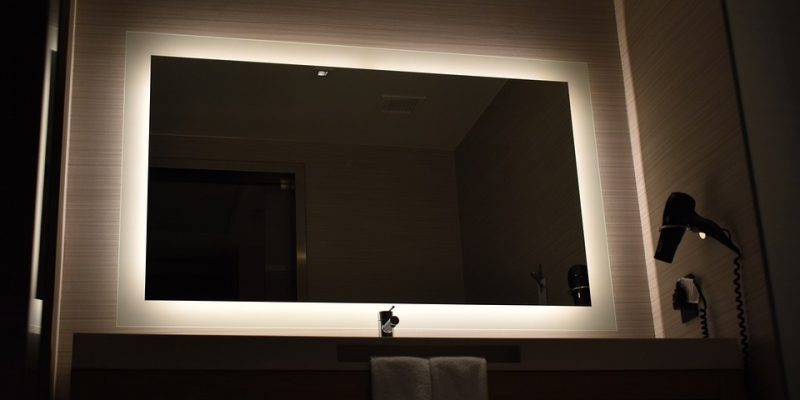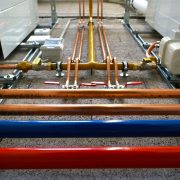Have you ever thought about purchasing a brand new TV, only to realize you need specialist TV mounting? If this is a challenge you have noticed, there are several things you’ll need to keep in mind, and we’ve outlined some of the main things you should know before mounting a TV as follows to help. After all, while there are many different approaches to mounting a TV, not all are necessarily as reliable as others. And so, making sure you’ve taken steps to choose the optimal TV mount is integral for your home design overall; a brand-new mounted television will often cost thousands, so there’s no room for error when it comes to TV mounting.
Key Factors to Consider When Mounting a TV
Have you been looking to install a brand-new TV in your home? In many cases, finding the perfect new TV can seem hard – but with more and more of us opting for mounted wall TV models, knowing how to mount your TV safely and reliably is hugely important. Fortunately, when working out how to mount your TV, there are several things you can keep in mind to help inform your decision.
#1 TV Size and Weight
Without a doubt, one of the first things you must look at when purchasing and installing a new TV mount is your device’s overall size and weight. Indeed, the vast majority of modern televisions are incredibly large, which often means that regular TV mounts may not always do enough to support a particularly weighty model.
It’s also worth considering here that most wall mounts are rated based on a predetermined range of weights. As such, when buying a mount for a 60-pound TV (for example), you’ll want to make sure you’ve purchased a TV mount in the 50-75 pounds weight range or similar.
Can I Use a Higher Rated Mount?
This can leave many people wondering: if I have a lightweight TV, can I use a mount that’s rated for weightier models? Well, the answer to this can be a little difficult since it depends on the type of mount design in place. This is where the VESA pattern comes in, directly relating to whether the mount will even fit your lighter-weight device. In many cases, because the mount is designed for a heavier or larger television, you may not always be able to use a higher-rated mount with a small TV model. Thus, be sure to keep this in mind when choosing a mount to make sure it matches your TV size.
#2 Type of Wall Mount
Another factor that may play a role in your decision on the best type of TV mounting is the type and design of the wall mount. Generally speaking, there are three options in this regard that you could consider: fixed, tilting, and full motion. Each of these offers slightly different properties, so this may be important to remember as part of your decision.
First, let’s look at fixed wall mounts and how they work. Fixed designs are generally the simplest types of mounts, and as the name would suggest, they keep the TV in a fixed position on the wall. This means that your TV will be firmly hung on the wall in a set position.
Another option is a tilting wall mount, which offers greater freedom for users overall. These allow users to adjust the angle of their devices up or down, depending on the viewing angle they might be watching from; for example, if the TV is elevated, it may be beneficial to angle it downwards slightly.
As a third option, full-motion wall mounts offer the greatest amount of overall flexibility, allowing you to tilt, swivel, and extend the TV in any direction. These are great for scenarios where you may want to watch television from many areas of the room – but it’s important to remember that they also have more moving parts and could be at greater risk of damage.
Of course, the type of wall mount often comes down to individual preferences in the end. For those wanting a more streamlined look, a fixed wall mount may be the best option; however, a tilting or full-motion wall mount may be a better choice for greater freedom.
#3 Viewing Angle
We’ve hinted at this point already, but the viewing angle you choose for your television can also play a pivotal role when looking for your optimal mounting. Indeed, the viewing angle of a TV can directly influence how well you’re able to view the content on the television, thereby influencing your enjoyment of TV overall.
Generally speaking, the optimal viewing angle is usually eye level when seated. However, this may vary depending on where you’re sitting in the room. Moreover, if you’re mounting the TV above a source of heat (such as a fireplace), it’s worth considering that the high temperatures could also cause damage if the device is too close. In such cases, installing a mantel may help reduce the damage to your TV unit.
#4 The Type of Wall
When looking for the ideal wall mount, we often start by looking at the mounting itself. However, this can be a mistake in some scenarios since it’s not only the mount design that influences its suitability for your home. In fact, the type of wall you are mounting on can also play a big role in this decision.
Indeed, different wall mounts, such as drywall, concrete, or brick, are designed for different wall types. For drywall, you’ll need to use a wall mount that’s specifically designed to anchor into the studs behind the drywall. By contrast, if your property has concrete or brick walls, the mount will need to be secured directly into the wall instead.
Make sure to choose a wall mount compatible with the type of wall you will be mounting it on. The packaging or product specifications should indicate the type of wall the mount is designed for.
Final Thoughts
Struggling to find the ideal TV mounting for your device? If so, there’s a lot you may need to consider – but starting with professional support from a local mounting and installation team could help. Don’t leave it to chance; if you’re feeling unsure, partner with the professionals for further support.




















